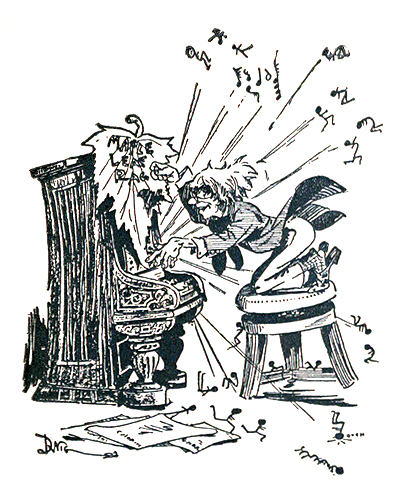
Ragtime 3
In general, and with Joplin's works as models, most published piano rags share structural features with the march and other duple-meter dances: multiple repeated eight- or sixteen-bar strains and an internal modulation in a trio-like section. Thus, for example, in the iconic " Maple Leaf Rag ," Joplin provides four sixteen-bar strains as follows: AABBACCDD. Beginning in the key of A-flat major, the C section, clearly marked in the score as the "trio," modulates to the subdominant D-flat major before returning to A-flat major in the fourth and final strain. In addition, Joplin's melodies feature the most common syncopated rhythm of short-long-short long-long (Example 1) and tied notes over bar lines (Example 2).
Joplin's rags show his fondness for harmonic inventiveness, for instance, in the flat-sixth sonority prominently placed in the fifth measure of "Maple Leaf Rag." Overall, his works balance idiomatic piano writing with a virtuosic display that is well suited to the developing capabilities of the instrument at the time.
Before listening again to " Maple Leaf Rag," see how much you can recall concerning the essential musical characteristics of a typical rag by reviewing the following musical features of classic ragtime:
- Multi-theme music (usually four themes, grouped as ABACD or ABCD).
- It has simple syncopation: the music was rarely rhythmically complex.
- It has an affinity to European art music: classic ragtime follows specific harmonic patterns that reflect the key relationships between sections.
- Recapitulation (return to the theme statement) was mandatory.
- Usually, the compositions had sixteen-measure segments, divided into four equal parts.
- The left hand was supportive and never syncopated.
- The harmonic movement was essentially that of tonic to dominant (I to V).
- Ragtime was essentially music composed for the piano.
- Ragtime was music that descended from the cakewalk, coon songs, and minstrelsy.
- Ragtime music was hard, bright, cheerful, and machine-like.
- Ragtime music was at its height between 1900 and 1920.








